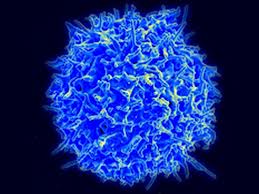It was originally thought that regulatory T cells (Tregs) which are characterized by expression of the transcription factor Foxp3 are a relatively homogenous population generated exclusively in the thymus. However, subsequent studies have revealed that an additional subset is derived from cells induced to become Tregs outside of the thymus. Such as the recently identified subset of Tregs found in murine skin with properties typical of memory cells, thus called memory Tregs (mTregs) This study analyzed this cell population in humans and found that almost all Tregs in normal skin had an activated memory phenotype. Compared with mTregs in peripheral blood, cutaneous mTregs had unique cell surface marker expression and cytokine production. In normal human skin, mTregs preferentially localized to hair follicles and were more abundant in skin with high hair density. Sequence comparison of T Cell receptors (TCRs) from conventional memory T helper cells and mTregs isolated from skin revealed little homology between the two cell populations, suggesting that they recognize different antigens. Under steady-state conditions, mTregs were shown to be nonmigratory and relatively unresponsive; however, in inflamed skin from psoriasis patients, mTregs expanded, were highly proliferative, and produced low levels of IL-17. Thus concluding that Tregs reside in healthy human skin but are qualitatively defective in inflammatory skin disease.














